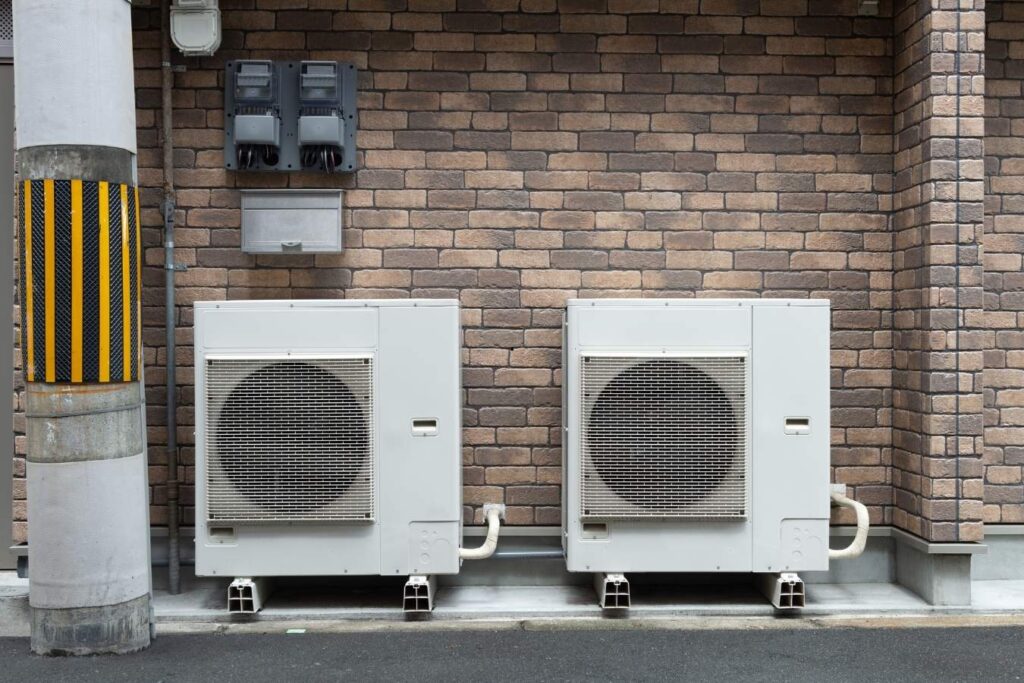For homeowners with a 2,000 square foot property, replacing an aging HVAC system or installing a new one is a significant investment. As we navigate 2025, the landscape of heating and cooling is changing, with new regulations, technological advancements, and a strong push towards energy efficiency and electrification influencing prices. Understanding the true cost goes far beyond a single number; it’s about evaluating system types, efficiency ratings, installation complexity, and potential savings through rebates.
While a general range for a new HVAC system in a 2,000 sq. ft. home typically falls between $8,000 and $20,000 (including equipment and labor), this figure is highly variable. For high-efficiency systems or those requiring extensive ductwork modifications, costs can even exceed this range. Let’s delve into the factors that shape this investment and what you can expect in 2025.
To understand the total investment, it’s helpful to break down the cost into its primary drivers:
- Equipment Cost: This is the price of the actual HVAC unit(s) – the furnace, air conditioner, heat pump, indoor air handler, outdoor condenser, etc. This cost varies significantly by type, brand, and efficiency rating.
- Installation Labor: The cost of the skilled technicians who remove your old system (if applicable), install the new one, connect refrigerant lines, electrical wiring, ductwork, and configure controls. Labor rates typically range from $75 to $150 per hour in 2025, but can vary by region and company.
- Ductwork (if needed): A crucial and often overlooked cost factor. If your home lacks ductwork, or if existing ducts are old, damaged, undersized, or poorly routed, this can add a substantial amount to the project.
- Ancillary Components & Upgrades: This includes thermostats (smart thermostats often come at an extra cost), air purifiers, humidifiers, zoning systems, and other accessories that enhance comfort and efficiency.
- Permits and Inspections: Most municipalities require permits for HVAC installations to ensure safety and compliance with building codes. These typically cost $200 to $500, but can vary by location.
- Old System Removal and Disposal: While often included in the overall quote, confirm if the disposal of your old equipment is covered.
HVAC System Types and Their Costs for a 2,000 Sq. Ft. Home
The type of HVAC system you choose will be the most significant determinant of the total cost. Here’s a look at the common options:
1. Central Air Conditioning with Furnace (Split System)
This is the traditional setup, common in many North American homes, where a furnace provides heat and a separate outdoor AC unit provides cooling, both using the same ductwork.
- Cost Range (2,000 sq. ft.):$8,000 – $20,000+
- Furnace Only: A new gas furnace for a 2,000 sq. ft. home typically ranges from $4,000 to $8,000 installed. High-efficiency models will be at the higher end.
- Central AC Only: Installing a new central AC unit (3-ton, appropriate for 2,000 sq. ft.) can range from $4,500 to $9,000.
- Combined System: When replacing both, the costs overlap, resulting in the combined range.
- Pros: Familiar technology, uniform cooling/heating if ductwork is good, often the most cost-effective if existing ductwork is sound.
- Cons: Burns fossil fuels (natural gas, if applicable), separate heating and cooling cycles, potential for duct loss inefficiency.
- 2025 Considerations: New EPA regulations on refrigerants (phasing out R-410A) and higher efficiency standards (SEER2) are increasing the cost of new AC units.

2. Heat Pumps (Air Source)
Heat pumps provide both heating and cooling in a single, highly efficient unit. Cold-climate air source heat pumps (ccASHP) are increasingly popular in regions like Ontario due to their performance in low temperatures and significant rebates.
- Cost Range (2,000 sq. ft.): $12,000 – $25,000+ for high-efficiency models. Some sources indicate a range of $17,000 – $23,000 as a median for whole-home systems.
- Pros: Exceptional energy efficiency (can provide more heat energy than electrical energy consumed), lower carbon footprint (especially when paired with renewable electricity), year-round comfort (heating and cooling).
- Cons: Higher upfront cost than traditional central AC/furnace (though rebates often offset this), may require supplemental heating on extremely cold days (often integrated as a “hybrid” system with a gas furnace).
- 2025 Considerations: These are heavily incentivized by government programs (e.g., Canada Greener Homes Grant, Home Efficiency Rebate Plus in Ontario) due to their environmental benefits. Rebates can be substantial, making them a very attractive option despite the higher sticker price.
3. Ductless Mini-Split Systems (Multi-Zone)
Mini-splits consist of an outdoor unit connected to multiple indoor air handlers, each serving a specific “zone” or room. They are ideal for homes without existing ductwork or for specific areas that need dedicated heating/cooling.
- Cost Range (2,000 sq. ft. for a whole-home system with multiple zones): $10,000 – $18,000+ or potentially up to $14,500 for a multi-zone system. The cost significantly increases with the number of indoor units (zones).
- Pros: Highly energy-efficient due to no duct loss and precise zone control, flexible installation, quiet operation, ideal for additions or retrofits.
- Cons: Visible indoor units (aesthetics can be a concern for some), higher cost per square foot for whole-home solutions compared to central systems if ductwork is already present.
- 2025 Considerations: Still a popular choice for homes without ducts or for creating highly customized zones. Can also qualify for rebates, especially if they are also heat pumps.
4. Geothermal Heat Pumps
The most energy-efficient option, geothermal systems draw heat from the stable temperature of the earth.
- Cost Range (2,000 sq. ft.): $20,000 – $50,000+. This is significantly higher due to the cost of drilling or excavating for the underground loop system.
- Pros: Extremely high efficiency, very low operating costs, long lifespan of ground loops (50+ years), very quiet.
- Cons: Very high upfront cost, requires significant land for horizontal loops or drilling for vertical loops, complex installation.
- 2025 Considerations: While expensive, they offer the lowest long-term operating costs and can qualify for the highest government rebates (e.g., up to $12,000+ from HER+).
Key Factors Influencing Your HVAC Installation Cost
Beyond the type of system, several other variables play a crucial role in the final price:
- Energy Efficiency Ratings (SEER2, EER2, HSPF2): Higher efficiency ratings generally mean higher upfront equipment costs. However, these systems lead to significant long-term savings on utility bills. In 2025, new minimum efficiency standards mean new units are generally more efficient (and slightly more expensive) than older models.
- Ductwork Condition and Requirements:
- Existing, Good Ductwork: If your 2,000 sq. ft. home has well-maintained, properly sized, and sealed ductwork, this significantly reduces costs.
- Ductwork Repair/Modification: If ducts are old, leaky, or improperly sized, repairs or modifications can add $1,000 – $7,000.
- New Ductwork Installation: For homes without existing ducts (e.g., boiler-heated homes being converted to central air), installing a complete ductwork system can be a major undertaking, adding $5,000 – $15,000+ depending on complexity and materials.
- System Size (Tonnage/BTUs): A 2,000 sq. ft. home typically requires a 3 to 4-ton AC or heat pump unit. However, proper sizing requires a Manual J load calculation by a professional. Factors like insulation levels, window types, ceiling height, climate zone, and home orientation all impact the actual load. An improperly sized system (too big or too small) will operate inefficiently and lead to discomfort or higher bills.
- Installation Complexity:
- Accessibility: Is the furnace in an easy-to-access basement, or a cramped attic? Is the outdoor unit easily placed? Difficult access increases labor time.
- Electrical Upgrades: Older homes may need electrical panel upgrades to support new, higher-capacity HVAC systems. This is an additional cost.
- Refrigerant Lines: Running new refrigerant lines or replacing old ones can add to labor and material costs.
- Brand and Warranty: Reputable brands (Carrier, Trane, Lennox, Rheem, Goodman, Mitsubishi, Daikin, Fujitsu, etc.) often come with higher price tags but offer better reliability and warranties. Some brands announced price increases in 2025 due to material costs and refrigerant transitions.
- Additional Features:
- Smart Thermostats: Add $200 – $500.
- Zoning Systems: For central systems, adding zoning can cost $1,700 – $4,500+.
- Whole-Home Air Purifiers/Filtration: Can add $500 – $2,000+.
- Humidifiers/Dehumidifiers: Add $500 – $1,500.
- Geographic Location: Labor costs, permit fees, and even regional material costs can vary significantly depending on where you live.
- Time of Year: Some HVAC companies offer discounts during off-peak seasons (fall or spring) when demand is lower.
HVAC Rebates and Incentives in 2025
For homeowners in Canada, particularly Ontario, 2025 is a prime year to invest in energy-efficient HVAC thanks to significant government incentives:
- Canada Greener Homes Grant / Home Efficiency Rebate Plus (HER+): This program offers substantial rebates for eligible energy efficiency upgrades, with cold-climate air source heat pumps being a major focus. Homeowners can receive up to $7,500 for heat pump installations (more for electrically heated homes, up to $10,000 in Ontario for heat pumps). Geothermal systems can qualify for even higher rebates, up to $12,000.
- Federal Tax Credits: As of January 1, 2025, ENERGY STAR Most Efficient air source heat pumps are eligible for federal tax credits, offering additional savings.
- Other Local Programs: Check with your local utility providers or municipal governments for any additional rebates or financing options.
These rebates can significantly reduce the net investment, making high-efficiency systems much more financially accessible. Be sure to work with an HVAC contractor who is knowledgeable about these programs and can help you navigate the application process.
The Installation Timeline
For a 2,000 sq. ft. home, the installation timeline can vary:
- Simple Change-Out (Replacing like-for-like with existing, good ductwork): This could take as little as 1-2 days.
- Full System Installation (New furnace/AC or heat pump with minor duct modifications): Expect 3-5 days.
- Complex Installations (New ductwork, major electrical upgrades, geothermal drilling): This could extend to a week or more.
While the upfront cost of a new HVAC system for a 2,000 sq. ft. home can seem daunting, it’s crucial to view it as a long-term investment. A new, properly sized, and highly efficient system offers:
- Lower Energy Bills: Significant monthly savings on heating and cooling costs.
- Improved Comfort: Consistent temperatures, better humidity control, and enhanced indoor air quality.
- Increased Home Value: A modern, efficient HVAC system is a major selling point for prospective buyers.
- Reduced Carbon Footprint: Especially with heat pumps, contributing to a more sustainable future.
- Peace of Mind: Newer systems come with warranties and are less prone to unexpected breakdowns.
Before making a decision, always get multiple quotes (at least three) from reputable, licensed HVAC contractors. Ensure they perform a comprehensive home assessment and Manual J load calculation. Ask for detailed breakdowns of equipment, labor, and any additional costs. By doing your homework and leveraging available incentives, you can ensure your 2,000 sq. ft. home enjoys optimal comfort and efficiency for years to come, without breaking the bank.






